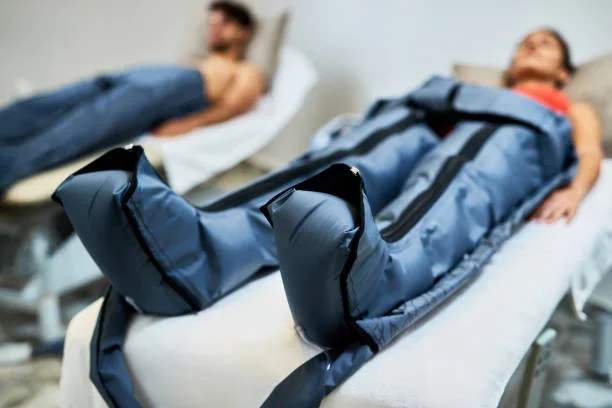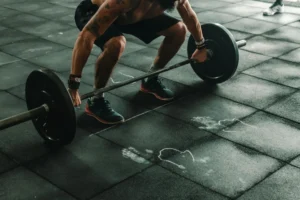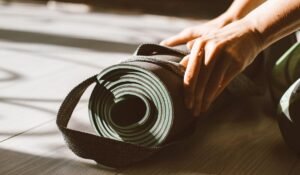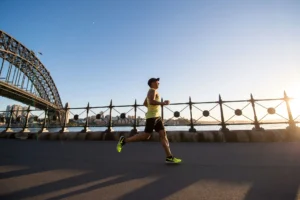Disclaimer: This content is for informational purposes only and does not constitute medical advice. Always consult a licensed healthcare professional before starting any new recovery treatment, especially if you have underlying health conditions or are recovering from surgery or injury.
It’s 2025, and compression boots have gained considerable popularity as a recovery treatment for athletes. When you walk into a physiotherapy clinic, you’re likely to encounter a few people wearing inflated boots.
Here’s why:
The boots’ compression has been demonstrated to reduce discomfort and improve healthy circulation.
But, do recovery boots work? And are they worth their price?
Let’s delve into the surprising benefits of recovery boots and how to maximize your recovery regimen.
First, What Are Compression Boots?
They utilize intermittent pneumatic compression, which involves inflating and deflating to apply pressure to various areas of the leg, providing an air massage.
“Your body is constantly generating metabolic waste as it produces and uses energy, and that waste gets circulated throughout your blood,” says Kathleen Leninger, D.P.T., a physical therapist. Since your lower limbs are below your heart, it’s harder for the heart to pump the waste from your legs to the lymph system, which helps you get rid of it.
The concept behind Recovery boots is relatively straightforward: compression increases blood flow to your legs, which helps circulate waste and allows your body to eliminate it more efficiently.
7 Benefits of Leg Compression Boots
1. Improved Circulation
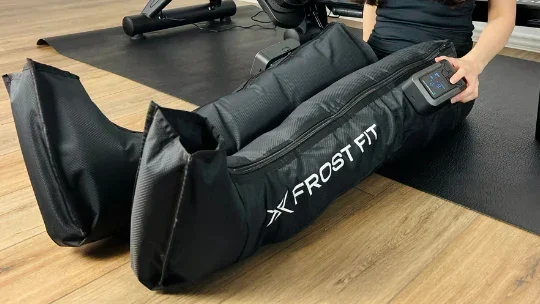
Some recovery legs are secured with Advanced Tubeless Technology, as opposed to static muscle stimulation, which helps restore circulation after an intense workout. This supports the elimination of waste products from the body, such as lactate.
The stronger your blood flow, the less obese you will be and the healthier your body will feel, resulting in faster recovery.
2. Increased Flexibility, Mobility, & Range of Motion
After an intense training session, many athletes are exhausted and have limited mobility and range of motion as their bodies recuperate. One of the primary advantages of leg Recovery boots is their ability to restore your mobility and range of motion after an exercise.
With your flexibility, mobility, and range of motion restored rapidly following an exercise, you may resume working out at a faster rate and avoid spending a recovery day bringing your muscles and joints back into regular activities.
3. Reduce Swelling & Inflammation
The advantages of Recovery boots include reducing edema and inflammation following an intense workout. The pulse technology stimulates and restores blood flow, reducing muscle swelling and inflammation in the joints following an exercise.
This reduction in edema and inflammation helps alleviate pain, improve mobility, and promote regenerative health, allowing for a faster return to training.
4. Relieves & Prevents Muscle Soreness
Nobody enjoys tight or stiff muscles; many athletes may postpone regular exercise due to muscular discomfort, which can feel limiting and restrict mobility. That said, the significant benefit of being active is alleviating stiffness.
When your legs aren’t stiff or tight after a workout, you’ll be able to return to your routine and training plan in one to two days with minimal stiffness.
Remember: when you feel well, you perform better!
5. Improved Training
As discussed earlier, the advantages of leg recovery boots include helping athletes work out more effectively. The increase in blood flow, combined with muscle relaxation, allows the body to function at a higher level while remaining safe.
Moreover, Compression therapy boots offer numerous benefits to athletes seeking to enhance their training gains or maintain optimal body care on rest days. They not only allow for lifting more weight and running therapy, but also exhibit greater endurance with fewer adverse effects.
6. Shorter Recovery Time
The Advanced Tubeless Technology in Compression therapy boots enables you to target specific pressure points, allowing you to rejuvenate your legs more quickly between exercises. Every doctor and coach warns their patients against strenuous workouts that overwhelm the body. However, you can shorten your recovery time by replenishing your body rather than just pushing through pain.
As a result, you can work out longer, harder, and better for extended periods without endangering your health.
7. Prevention of Deep Vein Thrombosis (DVT) in At-Risk Individuals
Deep vein thrombosis is a serious medical condition characterized by the formation of blood clots in the deep veins, most commonly in the lower extremities, such as the legs. While widely associated with long-haul flights or post-surgical recovery, active individuals with pre-existing risk factors are also susceptible.
Circulation boots help mitigate this risk by encouraging constant blood movement. This surprising benefit is beneficial for:
- Long-distance travelers
- Post-operative patients
- People on bed rest
Important Note: While compression therapy boots aren’t a substitute for medical-grade DVT prevention in high-risk cases, they provide a complementary solution approved by many healthcare professionals.
How to Use Circulation Boots
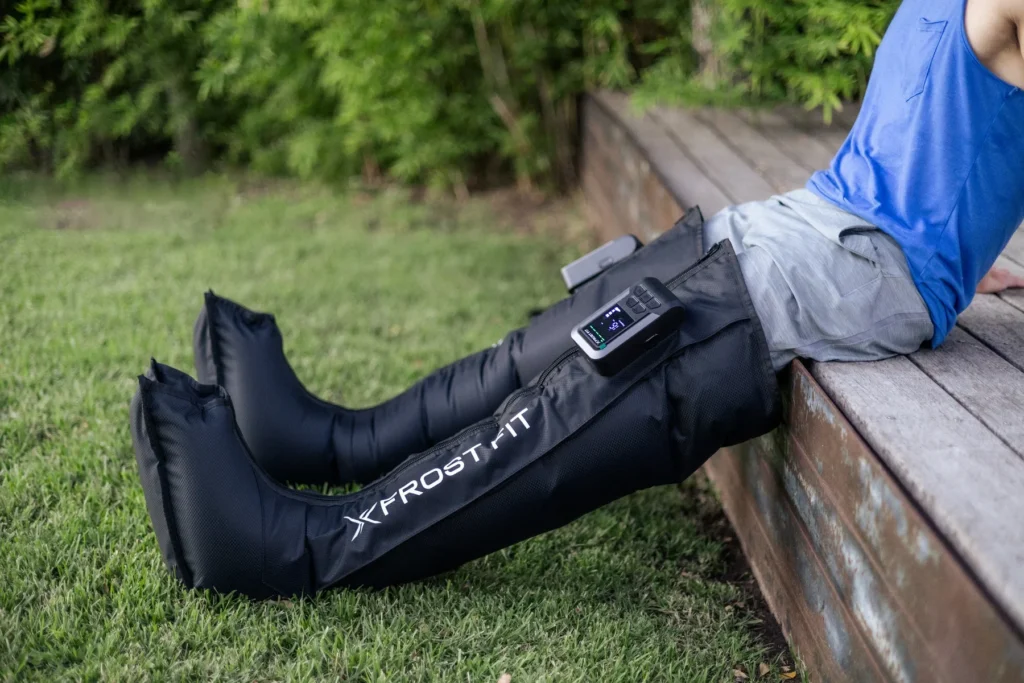
If you want to test Circulation boots, try a pair at your gym or a physiotherapy office and then proceed from there. Finally, only you can decide whether they’re worthwhile for you.
Keep in mind, however, that before attempting a new healing strategy, it is always advisable to consult with your doctor.
1. Consult a Physiotherapist Before Using
While compression therapy boots are relatively safe, it is always recommended that you try them under the guidance of a physiotherapist before using them independently.
Some experts advise against using leg wraps after surgery or injury without physician approval.
2. Wear Loose Clothing
Before using muscle recovery boots, remove your shoes and any compressive clothing. It’s explained that, together with the device’s compression, they can become excessive and painful.
3. Keep Sessions Short
Your physiotherapist will be able to determine the appropriate length of compression time for your body. However, 20 minutes is usually plenty of time for most athletes.
On the other hand, it is recommended to avoid using muscle recovery boots for more than 30 or 40 minutes at a time.
4. Use Post-Exercise
Compression therapy is most effective after strenuous workouts, such as lifting, jogging, or cycling. Use it after your cool-down routine to kickstart your recovery process.
5. Use Them for Workout Recovery
Recovery boots do not substitute for mild recovery workouts, stretching, foam rolling, or proper nutrition. Turn to them to supplement the principles of healthy healing.
Final Thoughts
While muscle recovery boots were once a luxury reserved for professional athletes, they’ve now become an accessible recovery tool for almost anyone concerned about leg fatigue, swelling, or workout recovery.
Before purchasing, consider your specific needs, whether it’s post-workout recovery, managing a medical condition, or simply relaxation.
Also, consult a healthcare professional if you have circulatory issues or underlying health concerns before using pneumatic compression devices. With a wide range of options available today, from entry-level consumer models to advanced pro-grade systems, there’s likely a set of muscle recovery boots that fit both your budget and your recovery goals.





